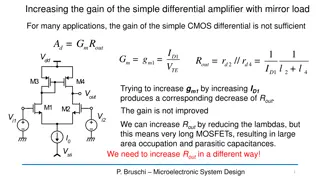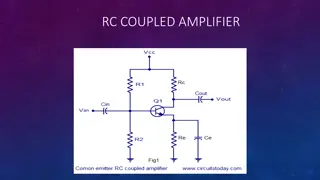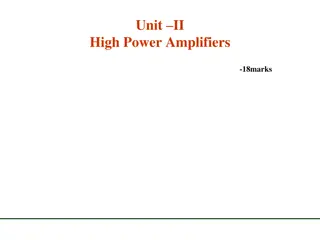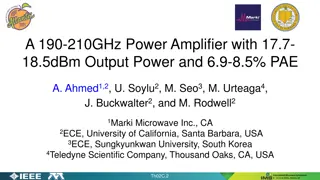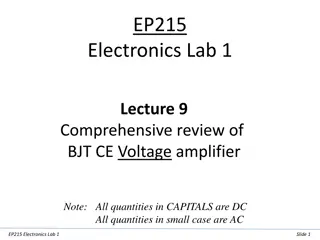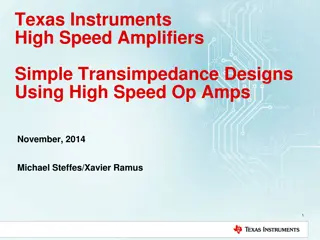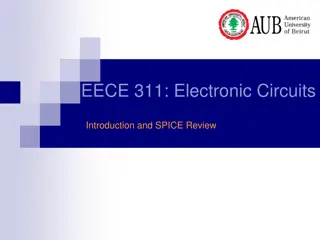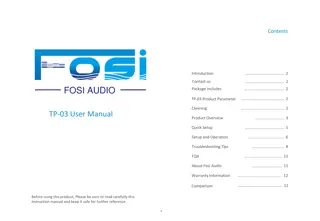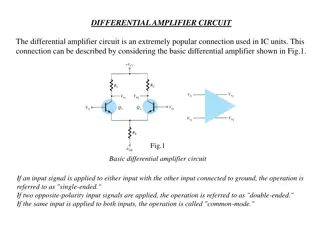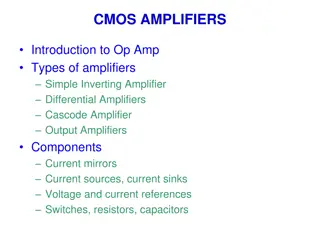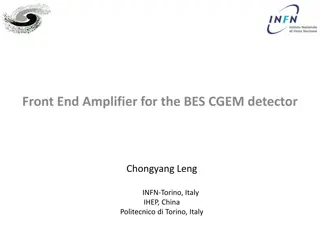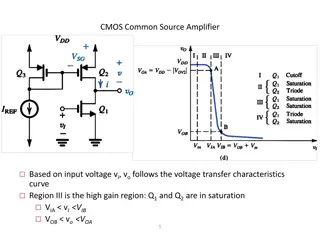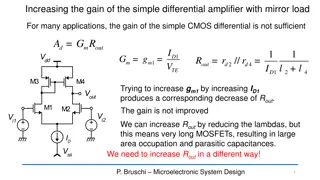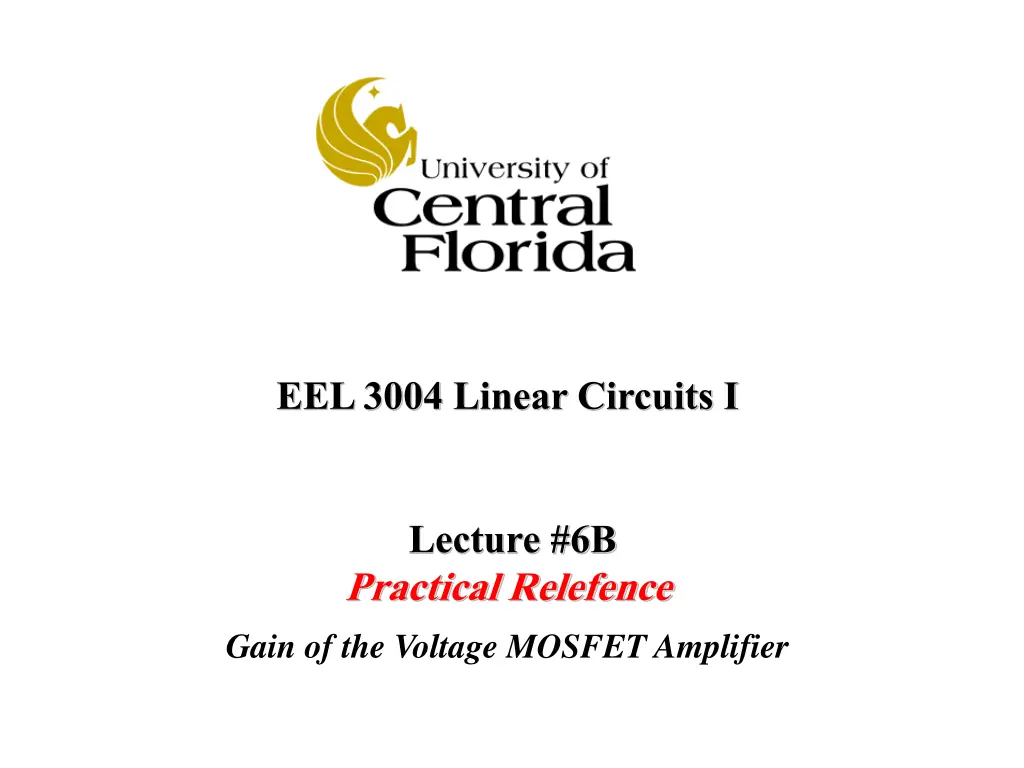
Understanding MOSFET Transistor Amplifiers in Electronic Circuits
Explore the significance of voltage amplifiers in modern electronics, delve into the history of transistors, and learn about MOSFET technology for circuit design and analysis.
Download Presentation

Please find below an Image/Link to download the presentation.
The content on the website is provided AS IS for your information and personal use only. It may not be sold, licensed, or shared on other websites without obtaining consent from the author. If you encounter any issues during the download, it is possible that the publisher has removed the file from their server.
You are allowed to download the files provided on this website for personal or commercial use, subject to the condition that they are used lawfully. All files are the property of their respective owners.
The content on the website is provided AS IS for your information and personal use only. It may not be sold, licensed, or shared on other websites without obtaining consent from the author.
E N D
Presentation Transcript
EEL 3004 Linear Circuits I Lecture #6B Practical Relefence Gain of the Voltage MOSFET Amplifier
Lecture Objectives The lecture today will focus on: Learn about the voltage amplifier and why it is important in today s electronic products Understand the function of the transistor as an amplifier Understand the model of the transistor Learn the how to analyze simple voltage amplifier model
Smart Phones with its Printed Circuit Board (PCB) iPhonse Printed Circuit Board (PCB) Four possible power amplifiers are identified
Voltage Amplifier Block diagram of a voltage amplifier ??=?? ??
The MOSFET Transistor Amplifier The invention of the transistor is a rare revolutionary event in the history of civilization when a single invention is so powerful that it alters the course of human history Before the invention of the transistor, the early electronic switching (not mechanical switching) and signal amplification were done by using what was vacuum tubes The breakthrough came in December 1947 when three scientists at Bell Labs in the United States, invented the world s first working solid-state transistor known as a point-contact transistor. Vacuum tube. John Bardeen (1908-1991) William Shockley (1910-1989) Walter Brattain (1902-1987) They shared the Nobel Prize in Physics in 1956. One popular type known as the Metal Oxide Semiconductor Field Effect Transistor (MOSFET). Today s IC has billions of transistors.
Transistor Technology - MOSEFT MOSFET structure MOSEFT Symbol Positively doped (p) atoms Highly negatively (n+) atoms Lightly negatively (n-) atoms CommercialMOSEFT by NXP Semiconductors
MOSFET Model as an Amplifier Technology MOSEFT Symbol MOSEFT Simpleequivalent small-signal model
The MOSFET Voltage Amplifier Common-source voltage amplifier using the Metal Oxide Semiconductor Field Effect Transistor (MOSFET)
The MOSFET Voltage Amplifier Small signal model of MOSFET voltage amplifier
The MOSFET Voltage Amplifier Small signal model of MOSFET voltage amplifier ??1??2 ??1+ ??2 ??= 1 ???= ??//??//??= 1 ??+1 ??+1 ?? Simplified equivalent circuit
Deriving the Voltage Gain (??) ??1??2 ??1+ ??2 ??= 1 ???= ??//??//??= 1 ??+1 ??+1 ?? Apply KVL to the left loop to yield, By applying Ohm s law, the output voltage and current are given by, ??+ ????+ ????= 0 Solving for ?? to yield, ??= ???????? ?? ??? ?? ?? ??= ????? ??= ??= ??+ ?? Apply voltage division, Hence, the voltage gain from the input ?? to the output ?? is given by, ?? ??+???? ???= ??=?? ?? = ????? ?? ??+ ??
Deriving the Power Gain (??) ??1??2 ??1+ ??2 ??= 1 ???= ??//??//??= 1 ??+1 ??+1 ?? Next, we derive the power gain, ?? is the output power delivered to ?? ??? is the input power delivered by ?? ??=?? ??? Hence, the power expressions are given as follows, ?? ??? ?? ??= ???? ????? ??= ???????? ??= ??= ??+ ?? ???= ???? So, the power gain becomes 2 2?? ??? ??=?? =???? ???? 2 = ?? ??? ??+ ????
Example: Consider specific voltage amplifier values that are realistic for a particular type of application, with the following specifications: ??= 1.1 ? ??1= 100 ?? ??= 2.5 10 3???= 100 ?? ??= 1 ?? ??2= 100 ?? ??= 5 ?? ??= 20 ?? This gives the following combined values, ??1??2 ??1+ ??2 100?100 100 + 100= 50 ?? 1 1 ??+1 ??= = 1 ???= ??/ ??/??= = = 3.85 ?? ??+1 100+1 1 5+1 ?? 20 ?? 50 1 + 50?1032.5?10 3 ??= ?????= 3.85 = 9.44 ??+ ??
Example: This gives the following combined values, ??= 50 ?? ???= 3.85 ?? ??.? ? ?.? ? Hence, the voltage and power gains are given by, ?? 50 1 + 50?1032.5?10 3 3.852502 1 + 50 20 ??= ?????= 3.85 = 9.44 ??+ ?? ??? ??+ ???? 2 2?? 2= 2.5?10 3 2= 227 ??= ?? So, a signal that has ??= 1.1 ? will deliver input power of, ???= ????= 23.73 ?? ??= ????= 10.4 ? ??= ?????= 5.39 m?


